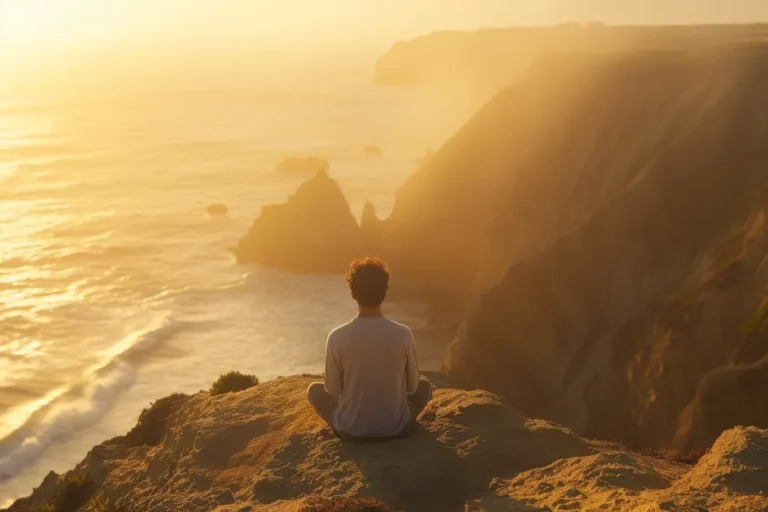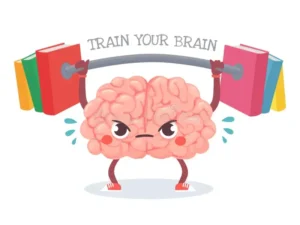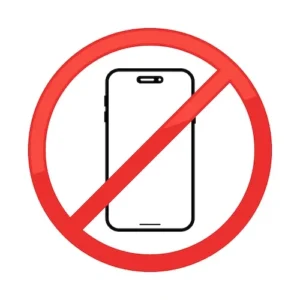You live in a world that is dominated by a drive for more. More productivity, more notifications, and the relentless pressure to always be “doing more”.
In our search for progress, have we inadvertently lost something precious? The art of doing nothing?
Our platform for social impact has identified a concerning popping up around the country – many of us have forgotten how to simply be still, to embrace those small moments of intentional idleness that our minds and bodies desperately need.
The Dutch have a beautiful concept for this: niksen – the art of doing nothing without purpose. It’s not laziness or procrastination; it’s a deliberate practice of allowing your mind and body to rest, rejuvenate, and reset.
This forgotten practice has started to gain steam in recent years as a way to regain our ability to be alone with ourselves and simply disconnect from the drive of life. But for many, even a minute of “useless” time seems horrifying.
But how did we get here? And more importantly, how do we reclaim this lost art? Let’s explore why both ancient wisdom and modern science advocate for the power of stillness, how to train your mind to embrace “nothingness,” and the transformative effects of digital detoxing.
Why Ancient Wisdom and Modern Neuroscience Both Promote Stillness
The value of stillness isn’t some novel discovery. Ancient philosophical traditions have long understood what modern neuroscience is now telling us: our brains need periods of rest and reflection to function optimally.
The Wisdom of the Ancients
From Eastern meditation practices to Western contemplative traditions, cultures worldwide have recognized the power of stillness:
- Taoist philosophy embraces “wu wei” (non-doing) as a path to harmony
- Buddhist meditation centers on present-moment awareness and the quieting of mental chatter
- Ancient Greek philosophers advocated for periods of contemplation to achieve wisdom
- Indigenous cultures worldwide incorporate rituals of silence and solitude
Yet, even with thousands of years of history backing this up, the idea of doing nothing has been stigmatized in modern society as unproductive or lazy.
But take iconic thinkers like Albert Einstein, who argued that periods of idleness foster creativity, enhance problem-solving abilities, and promote mental clarity. Clearly, there’s something powerful about slowing down.
As a platform for social impact, we know that reclaiming these ancient practices isn’t just about individual wellness – it’s about creating sustainable communities where people can thrive rather than merely survive.
We believe in fostering a world of wellness and philanthropy through connection, compassion, and even a bit of healthy competition.
The Neuroscience of Stillness
It’s often funny that modern science pours money into studies that tell us what the ancient philosophers already knew. Our bodies were made for stillness.
When we allow our minds to be still:
- Our default mode network activates, allowing for increased creativity and insight
- Stress hormones like cortisol decrease, reducing inflammation and improving overall health
- Neural connections strengthen and reorganize, improving cognitive function
- Memory consolidation improves, helping us process experiences more effectively
Our brains were never designed for constant productivity. Neuroscience shows that our cognitive resources are finite and require regular restoration periods. Just as your smartphone needs charging, your brain needs downtime to process, integrate, and recharge.
This is particularly important for younger generations. A quarter of Americans experience burnout before age 30, with Gen Z and millennial adults hitting peak stress at an average age of just 25. Even more concerning, 84% of Millennials report experiencing burnout in their current roles.
How to Train Your Mind to Embrace “Nothingness” for Deeper Clarity
So, what’s the answer? Do we just… stop?
Unfortunately, learning to do nothing isn’t as easy as it sounds. Studies have shown that people need about 60 “lazy days” per year to feel rested, yet most struggle to embrace guilt-free relaxation.
In other words, our minds have been conditioned to equate busyness with value, making stillness feel uncomfortable or even anxiety-inducing.
In a culture that glorifies hustle and vilifies “doing nothing,” many young adults have developed a dysfunctional relationship with rest:
- Experiencing anxiety when not being visibly productive
- Turning hobbies into side hustles to “justify” enjoyment
- Filling every moment of downtime with content consumption
- Feeling guilty for taking breaks
- Believing they must “earn” relaxation through exhaustion
So how do we begin to change this pattern? Here are practical approaches to reclaiming the art of doing nothing:
1. Start Small: The 5-Minute Nothing Practice
Begin with just five minutes of intentional stillness daily. Find a comfortable spot where you won’t be disturbed, and simply sit.
No phone, no book, no music – just you and your thoughts.
Initially, this might feel uncomfortable as your mind races with to-do lists and worries. That’s normal. The key is to dedicate short periods daily to idle activities like staring out the window or listening to music without multitasking.
As a member of our personal development platform, you can share your experiences with other members, creating accountability and support as you develop this practice – you’re not alone!
2. Reframe Your Relationship with Productivity
One of the biggest obstacles to embracing stillness is our culture’s obsession with productivity. But productivity without rest might leave you spinning your wheels in the mud rather than making quality progress.
Try reframing rest not as wasted time but as essential for long-term productivity. Just as farmers allow fields to lie fallow to restore soil fertility, your mind needs rest to maintain its creative and cognitive capacities.
When you’re constantly stressed, your body produces elevated levels of cortisol that can actually shrink your prefrontal cortex (the area responsible for decision-making and focus). In severe cases, it can enlarge your amygdala (the fear center of your brain), reduce hippocampus volume (affecting memory and learning), and decrease dopamine production (your brain’s reward and pleasure chemical).
This explains why burnout feels like more than just “being worn out” – it’s actually altering how your brain processes information, experiences joy, and manages stress.
3. Create Designated “Nothing” Spaces
Do you have places where you can escape and just be?
Turn specific areas in your home or office into “technology-free zones”. Your bedroom may become a no-phone space, or you can create a comfortable corner with just a chair and a window. These physical boundaries help create mental boundaries, signaling to your brain that it’s time to shift from doing to being.
At AlignUs, we believe in the power of collective action. We encourage members to share photos of their “nothing spaces,” inspiring others to create their own sanctuaries of stillness.
4. Practice Mindful Observation
Engage in activities like meditation or journaling to center yourself during solitude. Try this simple mindfulness practice: sit comfortably and observe your surroundings without judgment or analysis. Notice the colors, textures, sounds, and sensations around you. This trains your mind to be present without needing to act, fix, or change anything.
5. Schedule “Nothing” Appointments
Have you ever scheduled a meeting with yourself? This is a surprisingly effective way to block out distractions and create a space that is uninterruptible.
Literally go into your calendar and block off time for doing nothing, treating it with the same respect you would any important meeting. Start with 15-30 minutes once a week, gradually increasing as you become more comfortable with stillness.
As Dr. Nikhil Sharma, our founder, often shares in our personal development platform discussions, making time for stillness isn’t selfish – it’s essential for sustainable wellness and authentic service to others.
How Unplugging from Screens Rewires Your Brain for Focus & Inner Peace
Here’s a stat that should bother you: U.S. adults now average over 10.5 hours of screen time daily. That’s almost all of our waking hours! Good luck finding time for any true slowing down.
Worst of all, this constant connection has profound effects on our neural pathways, attention spans, and overall mental well-being.
Previous generations left work at 5 PM and unplugged until the next day. Today, we check emails before bed, work where we live, get 24/7 notifications, juggle side hustles, and feel pressure to upskill in our “free time.”
Only 33% of 18 to 24-year-olds feel they can switch off from work when needed, compared to 46% of those aged 55 and above. Nearly half of young adults cite regularly working unpaid overtime as their biggest source of stress.
This constant connectivity has effectively eliminated the natural recovery periods that previous generations took for granted. In short, your brain and body never get the signal that it’s safe to fully rest and repair.
The Dopamine Detox
Your brain’s reward system wasn’t designed for the constant dopamine hits of modern technology. Each notification, like, and scroll triggers a small dopamine release, creating a cycle where your brain craves more and more stimulation to feel the same level of satisfaction.
This digital overstimulation leads to reward pathway desensitization, attention fragmentation, cognitive overload, and emotional exhaustion. Breaking this cycle requires intentional periods of digital detox.
As part of our healthy lifestyle community, we encourage members to participate in regular “screen-free Saturdays” or evening digital detoxes, sharing their experiences and supporting each other through the initial discomfort.
Unlike most social media platforms that profit from your addiction to screens, AlignUs is designed as a positive social media platform that empowers rather than depletes.
Create Digital Boundaries
Have you ever felt like you’re living a life that doesn’t quite feel like your own? Many of us are unknowingly caught in what can be described as the “societal matrix” – a complex web of norms, expectations, and conditioning that shape our beliefs, behaviors, and, ultimately, our lives.
It’s time to take back your life and begin to prioritize your well-being over constant digital connection. One way to do this is by setting digital boundaries for yourself.
- Device-free meals: Make mealtimes sacred spaces for presence and connection
- Tech curfews: Put all devices away at least one hour before bedtime
- Notification audit: Turn off all non-essential notifications
- Social media limits: Use app timers to limit social media use to 30 minutes daily
- Morning mindfulness: Wait at least 30 minutes after waking before checking devices
Breaking free from this matrix begins with reclaiming your attention and creating space for stillness. Through our platform for social impact, we provide tools and community support to help you establish and maintain these boundaries.
The Nature Connection
Time in natural environments has been shown to lower cortisol levels, reduce rumination, and restore attention. Yet urban living, indoor work, and screen-based leisure have dramatically reduced nature exposure for many. This nature deficit further compromises the brain’s recovery mechanisms.
The Japanese have an incredible practice called “forest bathing” or Shinrin-yoku. It involves simply immersing yourself in nature, using all of your senses to connect deeply with the environment.
The Transformation Process
Recovery from burnout begins with rebuilding your physiological foundation. Sleep quality is critical – it’s when your brain performs essential maintenance, including flushing metabolic waste through the glymphatic system, consolidating memories and learning, restoring neurotransmitter balance, and regulating emotional processing.
As you reduce screen time and create space for stillness, you may notice significant changes:
- Week 1-2: Initial discomfort, anxiety, and FOMO (fear of missing out)
- Week 3-4: Improved sleep quality and attention span
- Month 2: Enhanced creativity and problem-solving abilities
- Month 3: Deeper connections with others and yourself
- Ongoing: Increased resilience to stress and mental clarity
At AlignUs, our healthy lifestyle community provides the support and accountability needed to maintain these practices long-term, even when the initial motivation fades. Our weekly exercise competitions aren’t just about pushing physical boundaries – they’re about nurturing a spirit of community and support that extends to all aspects of wellness, including the practice of stillness.
You Can Do More From Doing Nothing – and AlignUs Is Here to Help
There’s something incredible about clearing your mind in times of stillness. Simply allowing yourself to be present, without tasks or distractions, creates space for your most profound insights and deepest healing. In these quiet moments, your brain can finally process experiences, make new connections, and restore itself from the constant demands of modern life.
Our healthy lifestyle community understands that true productivity paradoxically requires periods of deliberate non-productivity. Through our personal development platform, we’ve witnessed how members who embrace regular stillness practices report greater creativity, improved decision-making, and more meaningful connections with themselves and others.
The path to mastering the art of doing nothing isn’t about escaping responsibility. It’s about creating the mental clarity and emotional resilience needed to show up more fully in all aspects of life.
As you begin to incorporate more stillness into your daily routine, remember that you’re not just benefiting yourself. You’re joining a community of like-minded individuals who understand that sometimes, doing nothing is the most revolutionary thing you can do.
Together, we’re creating a culture that values presence over perpetual productivity, quality connection over constant activity, and authentic being over endless doing.





Reader interactions
2 Replies to “The Art of Doing Nothing: How to Master the Lost Skill of Stillness & Mental Clarity”
I just wanted to drop by and say how much I appreciate your blog. Your writing style is both engaging and informative, making it a pleasure to read. Looking forward to your future posts!
I wanted to take a moment to commend you on the outstanding quality of your blog. Your dedication to excellence is evident in every aspect of your writing. Truly impressive!